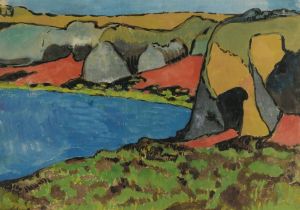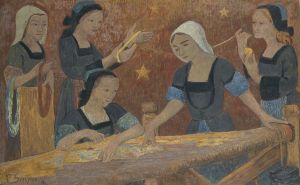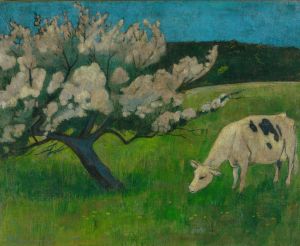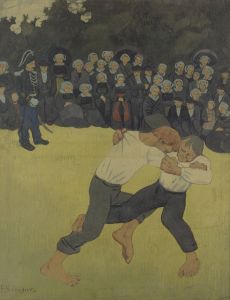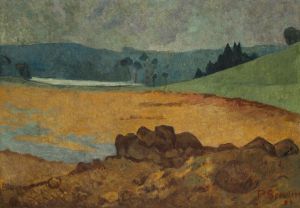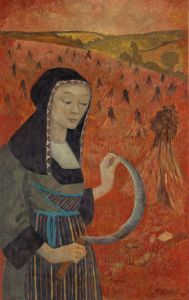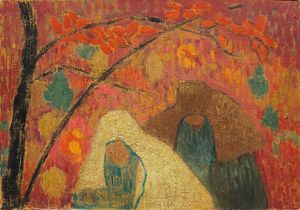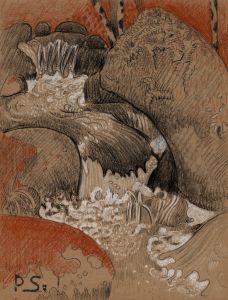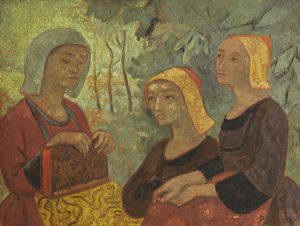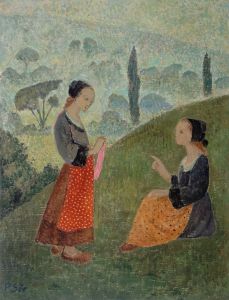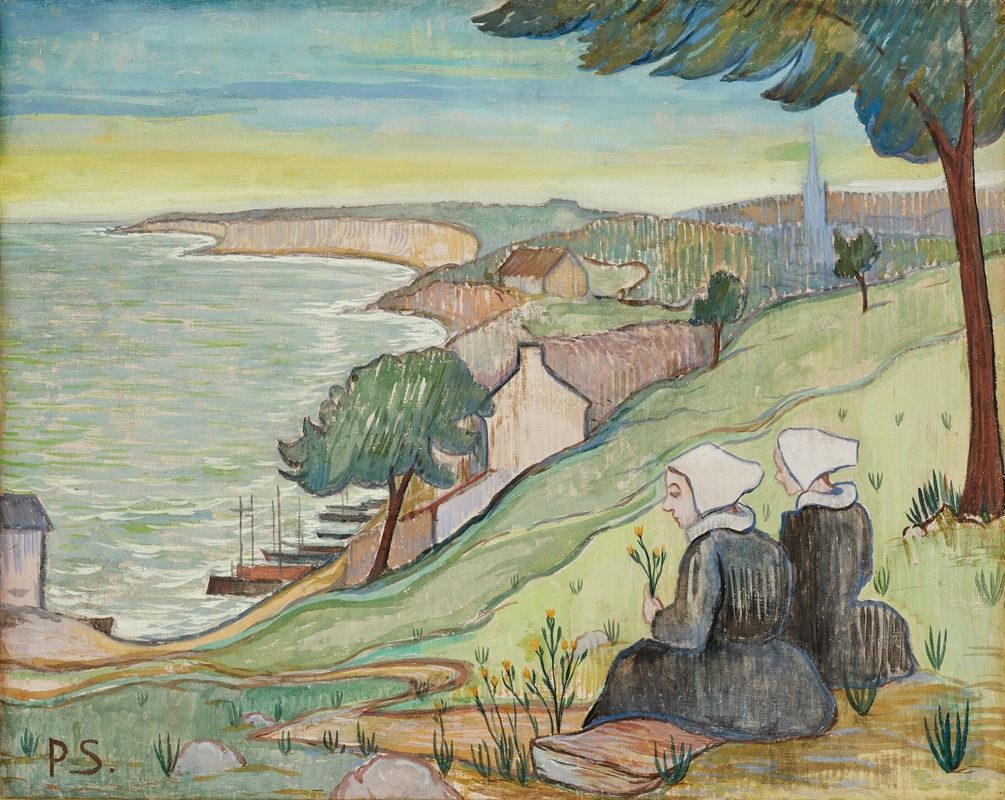
Bretonnes au Pouldu
A hand-painted replica of Paul Sérusier’s masterpiece Bretonnes au Pouldu, meticulously crafted by professional artists to capture the true essence of the original. Each piece is created with museum-quality canvas and rare mineral pigments, carefully painted by experienced artists with delicate brushstrokes and rich, layered colors to perfectly recreate the texture of the original artwork. Unlike machine-printed reproductions, this hand-painted version brings the painting to life, infused with the artist’s emotions and skill in every stroke. Whether for personal collection or home decoration, it instantly elevates the artistic atmosphere of any space.
"Bretonnes au Pouldu" is a painting by the French artist Paul Sérusier, created in 1890. Sérusier was a pivotal figure in the Post-Impressionist movement and a member of the group known as Les Nabis, which included artists like Pierre Bonnard and Édouard Vuillard. This group was known for its avant-garde approach, emphasizing symbolism and abstraction over naturalistic representation.
The painting depicts Breton women in the village of Le Pouldu, located in Brittany, France. This region was a popular destination for artists in the late 19th century due to its picturesque landscapes and the traditional lifestyle of its inhabitants. The Breton culture, with its distinct customs and attire, provided a rich source of inspiration for many artists, including Sérusier.
Sérusier's work is characterized by its bold use of color and simplified forms, a style influenced by his interactions with Paul Gauguin. In 1888, Sérusier visited Pont-Aven, another village in Brittany, where he met Gauguin. This meeting had a profound impact on Sérusier's artistic development. Under Gauguin's guidance, Sérusier painted "The Talisman," a small landscape that became a manifesto for the Nabis movement. This experience encouraged Sérusier to explore the use of pure color and flat planes, elements that are evident in "Bretonnes au Pouldu."
In "Bretonnes au Pouldu," Sérusier employs a vibrant palette and a composition that emphasizes the decorative qualities of the scene. The painting captures the essence of Breton life, focusing on the women in their traditional costumes. Sérusier's approach reflects the Nabis' interest in synthesizing form and color to convey emotion and spirituality, rather than merely replicating reality.
The painting is notable for its departure from the detailed realism that dominated much of 19th-century art. Instead, Sérusier's work is more concerned with the emotional resonance of the scene. The use of color is particularly significant; Sérusier applies it in broad, flat areas, creating a sense of harmony and rhythm. This technique aligns with the Nabis' philosophy of art as a means of expressing inner experiences and transcending the mundane.
"Bretonnes au Pouldu" is an example of Sérusier's contribution to the development of modern art. His work, along with that of his contemporaries, paved the way for future movements such as Fauvism and Abstract Expressionism. The painting is a testament to the innovative spirit of the Nabis and their commitment to exploring new artistic frontiers.
Today, "Bretonnes au Pouldu" is recognized as an important work in the history of Post-Impressionism. It exemplifies the shift towards abstraction and the exploration of color that would come to define much of 20th-century art. Sérusier's legacy, as seen in this painting, lies in his ability to capture the essence of a moment through a unique and personal lens, influencing generations of artists to come.






